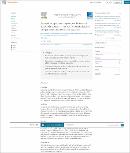| dc.description.abstract | Motivating people with psychosis to meet recommended physical activity levels is a public health priority. It remains unclear whether physical activity motives differ between male and female patients, those with and without cardio-metabolic risks, those who exercise alone versus in group and in aerobic exercise versus resistance training. The aim of this study was to explore differences in PA motives related to several patient characteristics in Ugandan outpatients with psychosis.
Methods
48 patients (24♀; 33.3 ± 9.6 years) completed the Motives for Physical Activity Measure – Revised (MPAM-R), Patient-centred Assessment and Counselling for Exercise questionnaire, the Brief Symptoms Inventory - 18 (BSI -18), were asked for their physical activity participation in the last 7 days and screened for abdominal obesity, overweight, hypertension, smoking, medication use and the presence of chronic conditions.
Results
A multivariate analysis of variance demonstrated main effects for stages of physical activity behavior change (Wilks λ = 0.40, F = 2.98, P = 0.043) and gender (Wilks λ = 0.45, F = 3.45, P = 0.031). There were no interaction effects between stage of change and gender (Wilks λ = 0.35, F = 1.89, P = 0.089). Men scored higher on appearance (P = 0.046) and interest/enjoyment (P = 0.042). Higher (P < 0.05) MPAM-R were observed in action and maintenance behaviour stages versus pre-action stages but there were no differences between the action and maintenance stage. There were no significant correlates between MPAM-R and BSI-18 scores.
Conclusions
Extrinsic (fitness, appearance, social benefits) and intrinsic (interest, competence) motives are equally important in adopting and maintaining physical activity in people with psychosis. Socio-cultural role patterns should be considered, also in Western settings (e.g., in refugees). | en_US |

